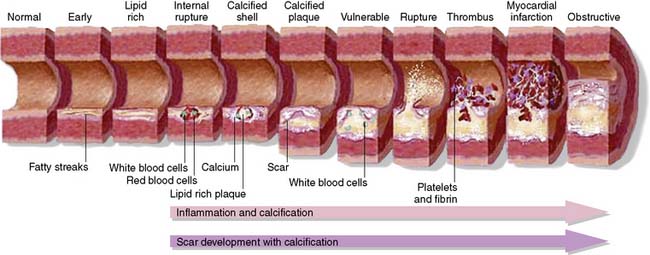

13, 14, 16 Hence, the presence of atherosclerotic disease in 1 vascular bed should not be approached as a localized, isolated disease but as a marker for potentially insidious disease in other vascular regions. 13 - 15 Likewise, cerebrovascular disease has been diagnosed in up to 40% to 50% of patients with PAD. In patients with PAD, the prevalence of coronary artery disease ranges from 20% to 60% when based on medical history, physical examination, and electrocardiography and up to 90% in patients who have undergone coronary angiography. 13 The detection of coronary artery disease is directly related to the intensity of the evaluation for atherosclerotic disease. The most important implication of PAD in terms of morbidity and mortality is that PAD serves as a strong surrogate marker for the severity of atherosclerotic disease in other vascular territories. 10, 11 After 5 to 10 years, less than one third of patients with claudication report pain, less than 20% require vascular surgery, and less than 10% require amputation. 9 However, relatively few of these patients will develop severe complications in the peripheral vasculature. 5 - 8 The prevalence of PAD increases with advancing age, as approximately 20% of people older than 70 years have the disease. 4 Epidemiologic studies have shown that approximately 2% to 3% of men and 1% to 2% of women 60 years and older have mild to moderate symptoms of claudication. 1 When the resulting obstruction impedes blood flow, symptoms may range from pain on exertion that is relieved by rest (claudication), the most classic manifestation of PAD, 2, 3 to pain at rest (critical limb ischemia). Peripheral arterial disease (PAD) is most commonly a manifestation of systemic atherosclerosis in which the arterial lumen of the lower extremities becomes progressively occluded by atherosclerotic plaque.

Once diagnosed, risk factor modification, symptomatic relief, and secondary prevention strategies with antiplatelet agents form the core of medical management of PAD. The ankle-brachial index correlates well with disease severity and functional symptoms and can also be used to assess disease progression and to predict cardiovascular and cerebrovascular mortality. Other office-based noninvasive tests, including the ankle-brachial index, can be easily performed to confirm the diagnosis and help stratify the risk. In the diagnosis of PAD, a detailed history and physical examination are extremely important, although limited by a lack of consistent sensitivity and specificity. Patients with PAD are at triple the risk of all-cause mortality and at more than 6 times the risk of death from coronary heart disease as those without the disease, yet PAD is probably the most underdiagnosed and least aggressively managed atherosclerotic disease. Shared Decision Making and Communication.Scientific Discovery and the Future of Medicine.Health Care Economics, Insurance, Payment.Clinical Implications of Basic Neuroscience.Challenges in Clinical Electrocardiography.


 0 kommentar(er)
0 kommentar(er)
